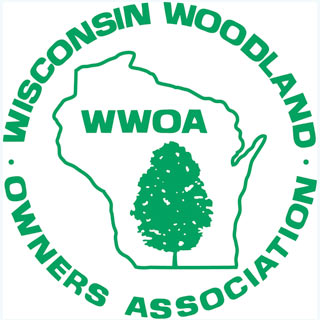RED PINE IN WISCONSIN: A HISTORY AND A FUTURE
Contact: Richard Nesslar, Richard.Nesslar@wisconsin.gov
Jeremiah Auer, Jeremiah.Auer@wisconsin.gov
Roger Bohringer, Roger.Bohringer@wisconsin.gov
There are over 100 species and many varieties of the genus Pinus around the world. In Wisconsin, the eastern white pine, red or “Norway” pine and jack pine are the only native and most plentiful pine species.
The vast pine forests of the state were exploited to help build cities and towns across the Great Lakes region, supplying the required lumber products for such cities as Chicago. After this great cutover, the lands were turned into small farms by the new immigrants.
Unfortunately, a challenging climate and depleted soils halted these efforts, with the fields and pastures converting back to forest. A few species proved to be better at growing in these conditions than others.
The native red pine is easy to grow on a plantation, doesn’t require as many nutrients as crops or even other tree species do, and, if properly managed, could provide numerous products throughout its lifetime. Red pine can be used for making paper, lumber, utility poles, cabin logs and many other products.
“The Wisconsin Department of Natural Resources’ Division of Forestry nurseries historically grew over 10 million red pine seedlings annually,” said Joseph Vande Hey, Wisconsin Department of Natural Resources (DNR) Reforestation team leader at the Wilson State Nursery in Boscobel. “These seedlings were planted by private individuals, county and state forests, tribes and forest industry.”
More recently, that number has fallen to less than 1 million annually due to land use changes, landowner preferences and smaller parcel sizes. However, in recent years, there seems to be a renewed interest in replanting some of the older plantations after they are harvested, returning the site to red pine again. This has begun to put pressure on all public and private nurseries to produce more seedlings.
Staff will also hold training sessions for anyone interested in picking red pine or other cones on Sept.7, 2023 from 1 – 3 p.m. at the Griffith and Hayward state nurseries.
For more information, please contact the Griffith State Nursery at 715-424-3700.
The state nurseries only grow red pine seedlings from seed collected on the landscape.
“Almost 100% of the seedlings produced at the DNR nurseries are from seed collected in Wisconsin,” said Richard Nesslar, the tree improvement specialist for the DNR’s Reforestation team. “We have a network of seed collectors that scour the state to bring us seed.”
Red pine has not had good cone crops these past few years. Tree seed production is cyclical and there are a host of insect seed predators that can attack and destroy a crop. Many seed collectors turned away to focus on easier, more lucrative species to collect.
“As a result, our coffers of stored seed have declined,” said Nesslar. “We are doing our best to encourage seed collection now as we believe there is a very good crop available.”
Red pine cones and the seed hidden within take two years to mature. Then, as the green, undeveloped cones start to mature in the second year, they slowly turn a deep brown. The seed within will develop a dark brown seed coat with a papery light brown wing. The perfect time to pick the cones is before the cone opens.
“The state nurseries will pay collectors to bring in these cones. We have a network of seed and cone-buying stations scattered across the state,” said Vande Hey. “If a person is interested in trying to gather seed and cones, they can start by looking at our webpage or contacting one of our staff.”
The state nurseries pay $125.00 per bushel of red pine cones. A bushel is 8 gallons, and experienced collectors can pick a bushel of cones in about 2-3 hours when the cone crop is good.
This year, the crop seems to be above average, and collectors may be able to pick even faster. Picking is easiest and safest for the collector and the tree when done from the ground using handheld landscaping shears. A quick snip leaves a small wound on the tree and a clean cone. Then a collector just needs to store the cones in a cool, dry area until they can get them to a seed collection site. Eventually, the nursery staff will transport all the cones to the Hayward State Nursery, where they will be processed. We can realize about a half pound of seed from a bushel of cones.
Find more information on collecting tree and shrub seed and selling them to the DNR on the DNR’s webpage on selling tree seed or contact the Griffith State Nursery at 715-424-3700 to set up an appointment with Reforestation staff in Wisconsin Rapids or Hayward.
